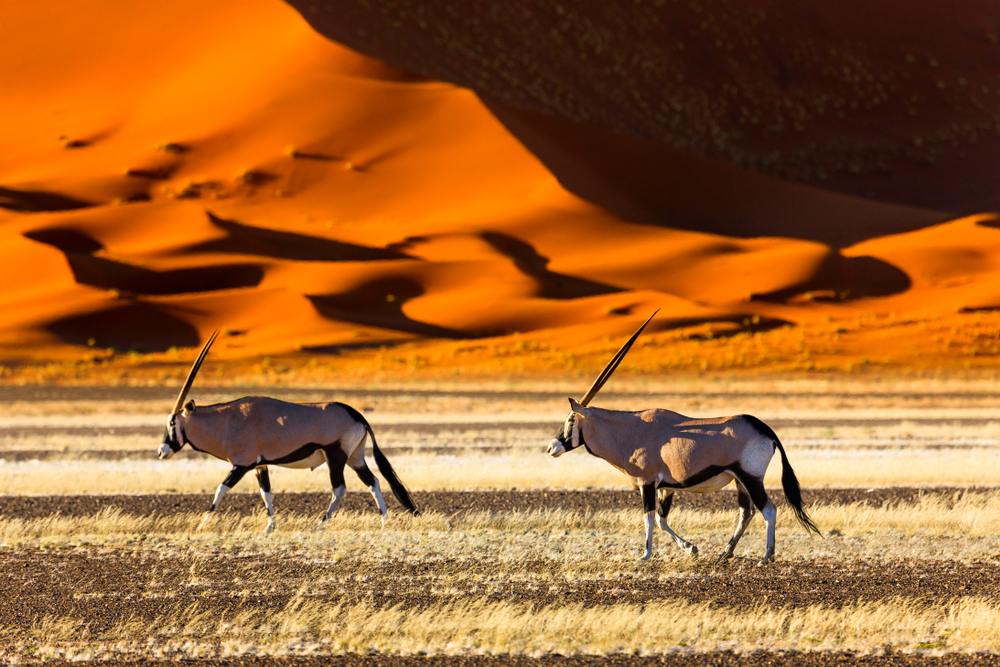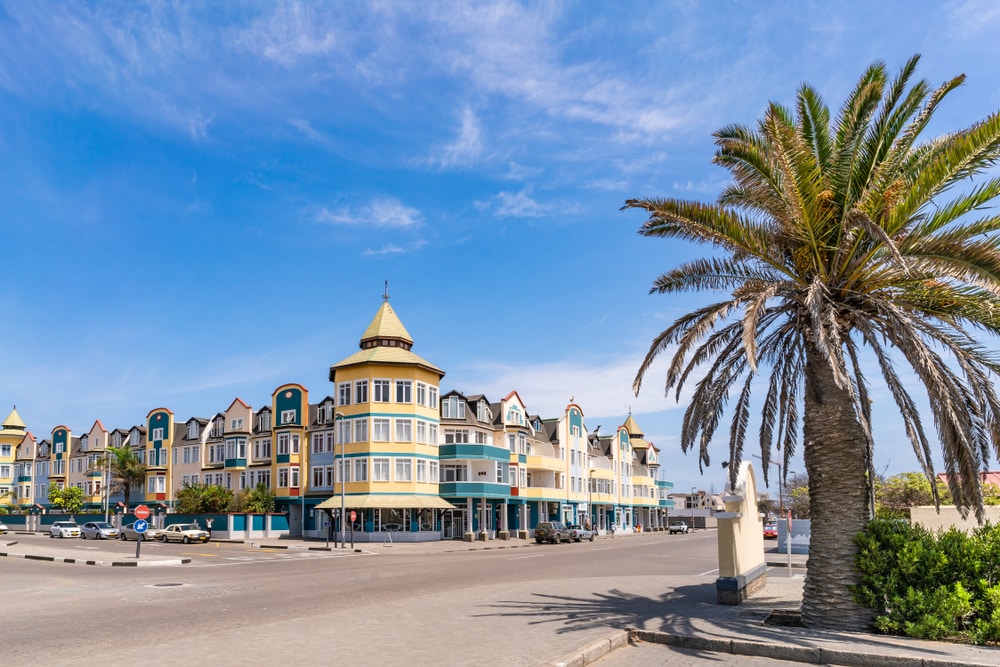There is no question that Namibia is a particularly strong part of the African south. With the endless expanses of the oldest desert in the world, with mountains of sand stretching up to a height of three hundred meters in the monster dunes of Sossusvlei, with the life-threatening region of the Skeleton Coast, with picturesque towns, the game-rich Etosha Pan and with many small and large wonders along the way. Namibia is in vogue because word has spread in international tourism that the former German colony is a largely safe travel destination, as long as you adapt to the conditions of the gravel roads. They require time, because the tires of the off-road vehicles are badly strained there and you should exercise caution in the curves on this unsafe terrain. But if you take this to heart, you will embark on an eventful journey through a land of light, emptiness and colours.

When the sun has sent its last rays over the fascinating Namib, those stories are told under the camel thorn trees that are passed on from generation to generation among the Bushmen. They are the stories of sun and sand, of thirst in waterless times and of hunting antelopes. There are still one hundred thousand indigenous people of the San people in Namibia and in neighboring Botswana. They are semi-nomads who have always built their houses out of branches and grass and can easily leave them if there are reasons for a change of location. They are collectors and hunters and they entrusted their dreams to the rocks of Namibia centuries ago, mostly in the form of animals. Just like in Twyfelfontein in southern Damaraland.
The self-esteem of the San has received a considerable boost in some regions of Namibia since they were encouraged to convey their rituals and lifestyle habits to holidaymakers in so-called “living museums”. The Living Culture Foundation Namibia was created thanks to a German initiative and enables the San villages to make an acceptable living. In the evening, they return to their homes, and when a warm wind blows through the trees, they are convinced that, true to ancient traditions, the sky has “slaughtered” the sun.

Sand and silence – these are the characteristics of the Namibian deserts. The red-yellow Kalahari and the Namib, which gave the country its name. Namibia is actually only green in the Zambezi region in the north, where the dangerous hippos populate the rivers and ponds. To the south, the elements have created the Fish River Canyon, the second largest in the world. The Skeleton Coast, so called because a number of stranded seafarers lost their lives there, is wildly romantic. The highlight of the varied Namib-Naukluft National Park are the dunes of Sossusvlei. In no other region of the world do they pile up in such dimensions. If you are good on foot there, you should go to Deadvlei, where gnarled tree remains bear witness to the fact that the river Tsauchab once silted up here.
There are only three cities in Namibia that deserve the name: the metropolis of Windhoek, Lüderitz and Swakopmund. And almost everywhere you can find traces of the German colonial era more than a hundred years ago. Walfis Bay on the rough and cold Atlantic coast has the only seaport in Namibia. South West Africa was once a gold and diamond mine, but when the treasures were unearthed, most Europeans left the country. Where the soldiers of fortune lived back then, today a hot wind blows through houses without window panes in Kolmanskop.
Namibia was the first country in the world to commit to nature conservation and enshrined this in its constitution, which contributed to the fact that many elephants, rhinos, lions and leopards can still be found in Etosha National Park today. The region around the dry and salt-solidified inland lake is one of the most interesting game reserves in Africa. Etosha and the neighbouring Waterberg are treasures of nature and proof of the thesis that the preservation of wilderness and tourism do not have to be mutually exclusive.
Travel information Namibia
| Capital | Windhoek |
|---|---|
| Form of government | Republic Semi-presidential democracy |
| Currency | Namibian Dollar (NAD) |
| Area | approx. 824,116 km² |
| Population | approx. 2,324,400 (2016) |
| Languages | English (German also very common) |
| Electricity grid | 220 volts, 50 Hz |
| Area code | +264 |
| Time zone | UTC+2 |




